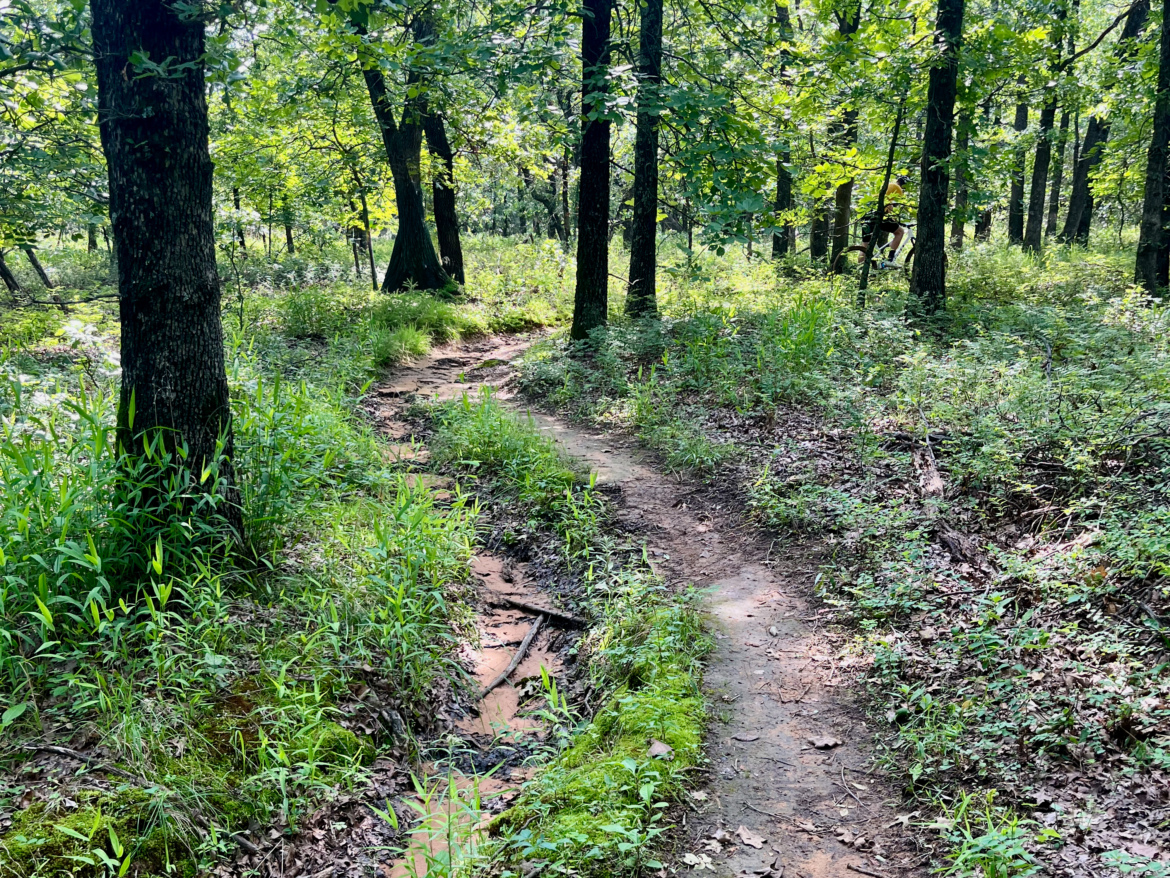
The mountain bike trails at Lake Thunderbird in Norman, Oklahoma, were eroding so badly that sediment was flowing directly into the town’s drinking water supply. Volunteers had built the 24 miles of singletrack on the southern edge of the lake in the early 2000s, but after 25 years, it was either close the trails down or rebuild them — those were the only two options. Fortunately, a local group was able to raise $1 million to bring their beloved trail system into the modern era.
The 25-year-old trails had become a drainage system
“We’re really looking at this as an opportunity to fix some of the problems that, unfortunately, found their way into the trail system over several years. We’re hoping that it gives people something to rally around to ask for more trails in the area,” Sebastian Wallach explained.
Wallach is a trail planner at Rock Solid Trail Construction. He and his colleague, trail designer and planner Sammi Runnels, are spearheading a complete redesign and rebuild of the Lake Thunderbird Trails. The two were especially excited for a project only a few hours away from their home base of Bentonville, Arkansas.
When Runnels and Wallach first arrived at the Lake Thunderbird Trails in June 2025, they were met with a trail system that had certainly seen better days. “[The trails] were really rough,” Runnels explained. “You saw a lot of cupping where the tread had receded down, maybe six inches in some cases, maybe a foot or two in others. So they were really hard to ride.”
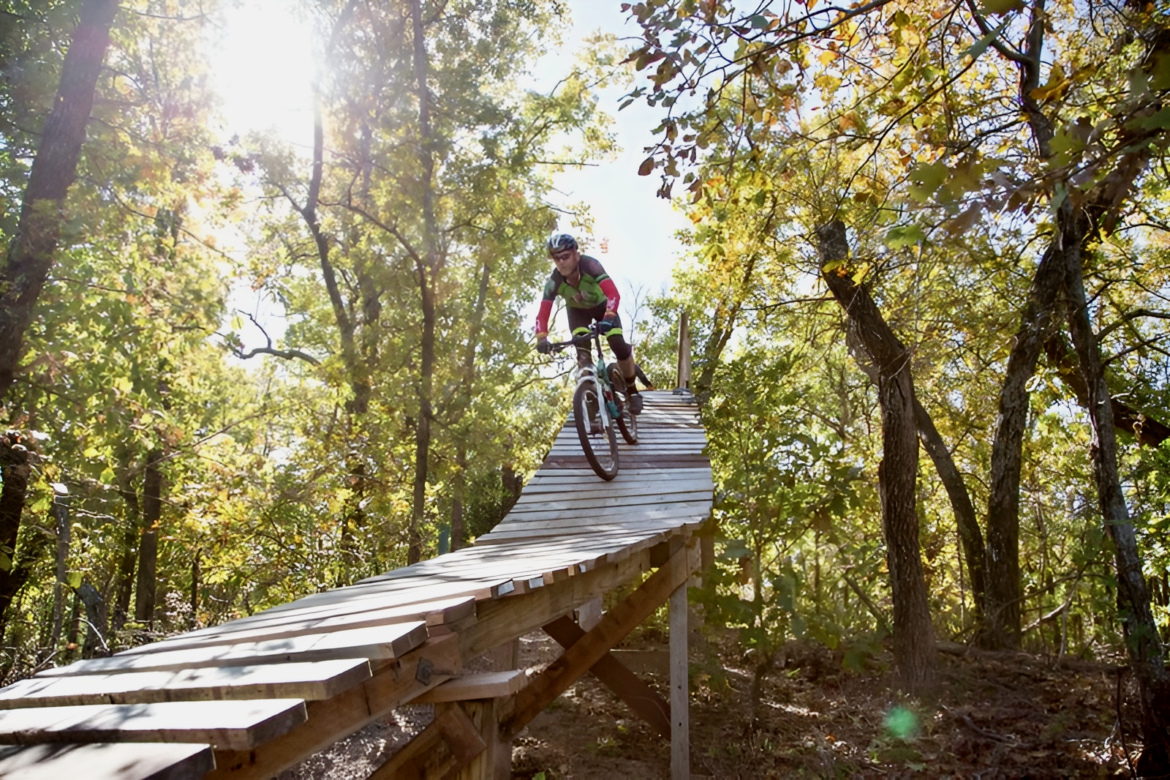
In many cases, they were completely unridable. And deep cupping wasn’t the only issue, as many of the trails at Lake Thunderbird were completely underwater. Large portions of the trails were built very close to the lake shore, and high water levels resulted in completely flooded sections. Wallach and Runnels conducted some research, spoke with locals, and discovered that due to heavy spring rain, the lake had reached its highest level in recent memory.
However, the most significant issue at Lake Thunderbird Trails was that the trails essentially became a drainage system, carrying sediment into Lake Thunderbird. While the lake is a destination for water recreation, it also serves as the area’s primary source of drinking water.
“It was ‘close the trails down or rebuild them,’ because the erosion had gotten so bad,” Wallach told us. “The Bureau of Reclamation was noticing water quality issues and was able to trace that back to the trails.”
Wallach shared that while the area doesn’t have tons of elevation, many of the trails were built too steeply for the slopes they were on. Ultimately, the 25-year-old volunteer-built trails may have been suitable for their time, but they weren’t up to today’s standards.
Furthermore, Runnels shared that, aside from trails turning into drainages, it was clear that regular maintenance wasn’t taking place. While different organizations were involved at varying times in the system’s history, individuals committed to regular maintenance seemed few and far between. Some locals still try to keep up the trail system, but, as Runnels and Wallach shared, one person can only do so much. During their time in Norman, they’ve met with local trail advocate Josh Jewell, who has been involved with Lake Thunderbird for approximately 20 years. When he isn’t riding, the two shared that he can be found with a weed wacker or other tools, maintaining different sections. But 24 miles is simply too much for a small local club, let alone one individual.
This was the state of most of the trails at Lake Thunderbird. While they were able to retain a few of the original trails, Rock Solid recommended a nearly complete rebuild to address the issues within the system.
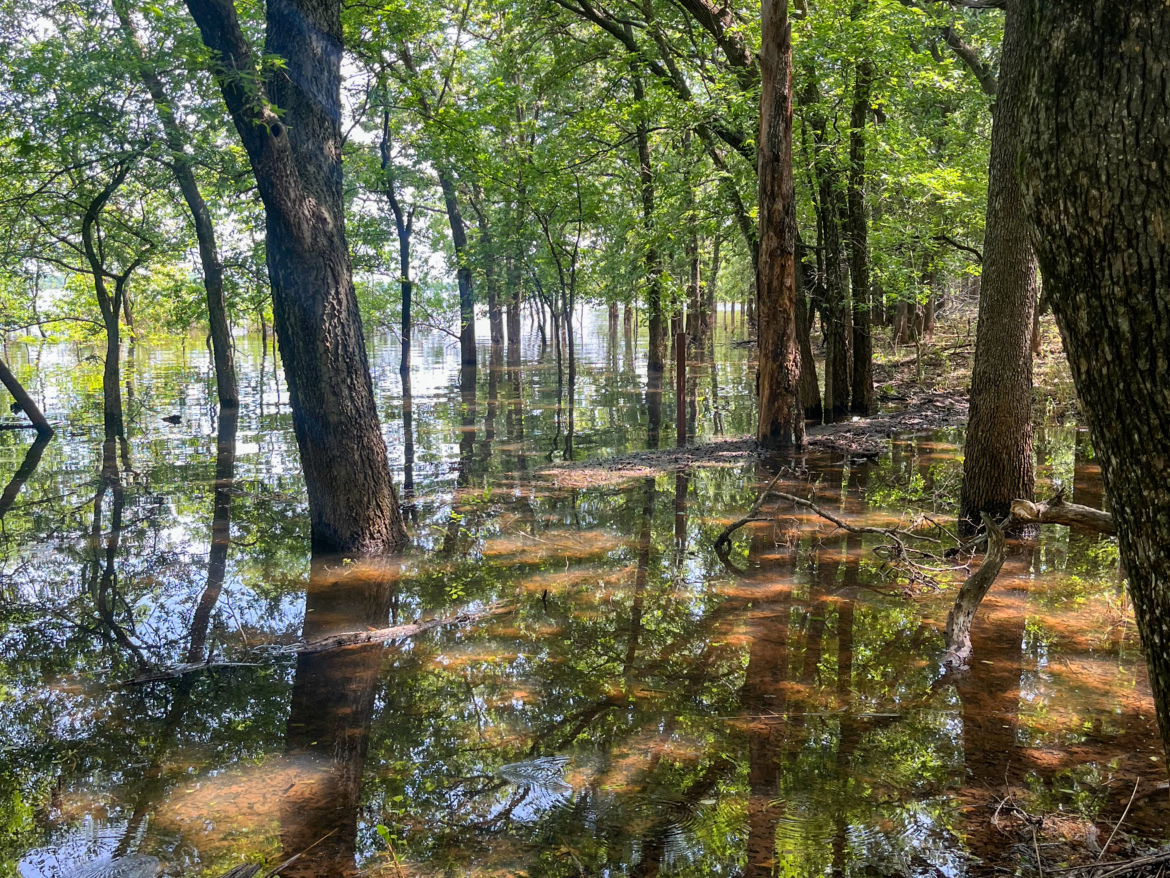
Quality over quantity: 24 miles becomes 10
One of the first things that needed to be addressed was the trails currently underwater. While this year had the highest water levels that locals could remember, it was clear that Lake Thunderbird was susceptible to flooding.
“A lot of what we spent time doing is studying existing flood data,” Wallach told us. “We were able to get 100 and 200-year flood lines basically through government data sets. And so we can use those to predict high-level marks.”
Looking at this data, Rock Solid was able to propose new routes near the shoreline that were well above the high water levels.
The rebuild of the Lake Thunderbird Trails will both resemble and differ significantly from the current trail system. Currently, three main trails exist at Lake Thunderbird: a green, a blue, and a black loop. Rock Solid plans to maintain this same design, with the green loop positioned furthest to the west, the black loop to the east, and the blue loop in the middle.
However, the mileage of the trail system will be dramatically reduced. “In a lot of communities, taking away miles is the antithesis of building new trails,” Wallach shared. “We’re getting closer to 10 miles of trail, but it will be quality over quantity.”
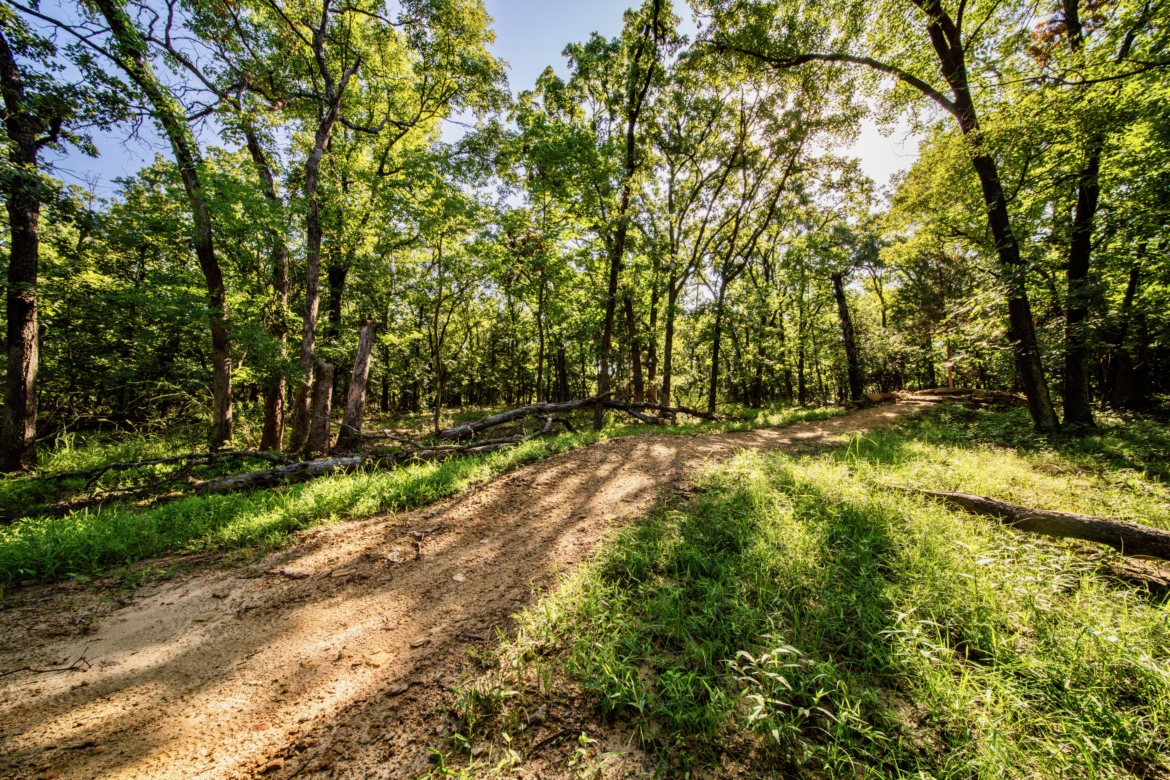
Wallach shared that Norman was a good example of a community that actually had too many miles in its trail system. He and Runnels affectionately referred to the trails at Lake Thunderbird as “spaghetti loops,” where the trail map resembles a handful of dropped pasta. Ultimately, there were too many miles to maintain correctly.
The Bureau of Reclamation, Lake Thunderbird’s land manager, also requested the mileage reduction.
But Norman mountain bikers can expect the 10 miles at Lake Thunderbird to be a phenomenal trail system. Wallach and Runnels noted that the topography and elevation are similar to those found in places like Bentonville. With that in mind, Rock Solid plans to provide a similar experience.
Wallach and Runnels said riders can expect a solid XC trail system, taking riders and other trail users to popular viewpoints along the lake. They are also mixing in techy sections, drops, and jump options along the way, likely on the intermediate and advanced loops. They will also incorporate skill areas where riders can spend time easily doing multiple laps to progress different skills, such as jumping.
Locals can expect a few of their favorite downhills to remain unchanged. “There are existing trails that we’re keeping — some of the downhills are, well, they rip,” Wallach shared. “They have a lot of sand in their soil, but they have a lot of tree cover in there. It turns into a little bit of a loamy top coat, which I was stoked on.”
The Lake Thunderbird rebuild is funded by a $1 million American Rescue Plan Act federal grant. Rock Solid builds projects around the country, and as the company shifts its focus toward southern projects for fall and winter, they expect to start work at Lake Thunderbird in November. If the weather cooperates, they hope to complete the trail system by spring 2026.





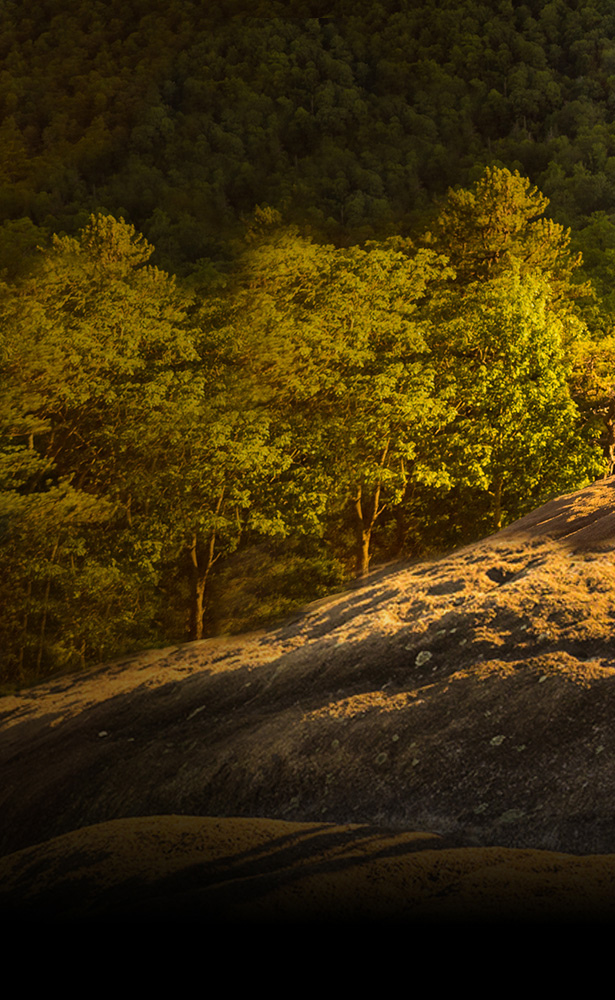
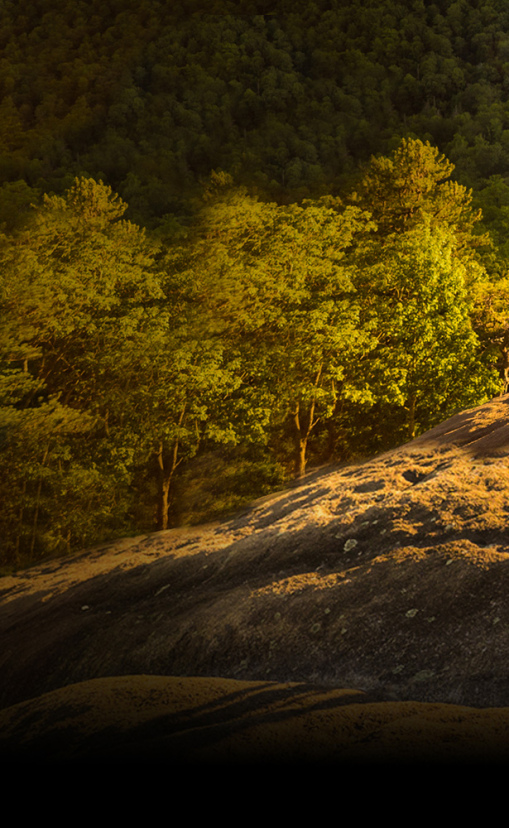
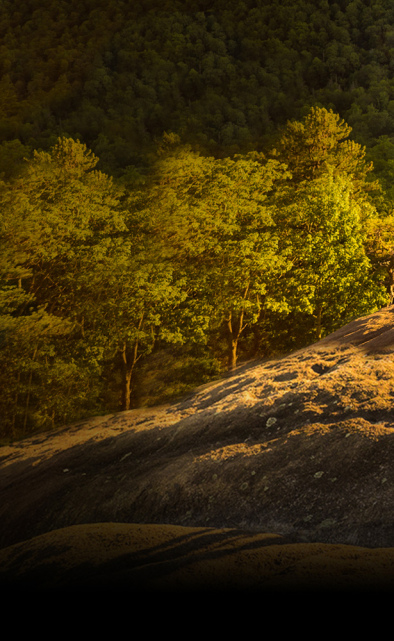
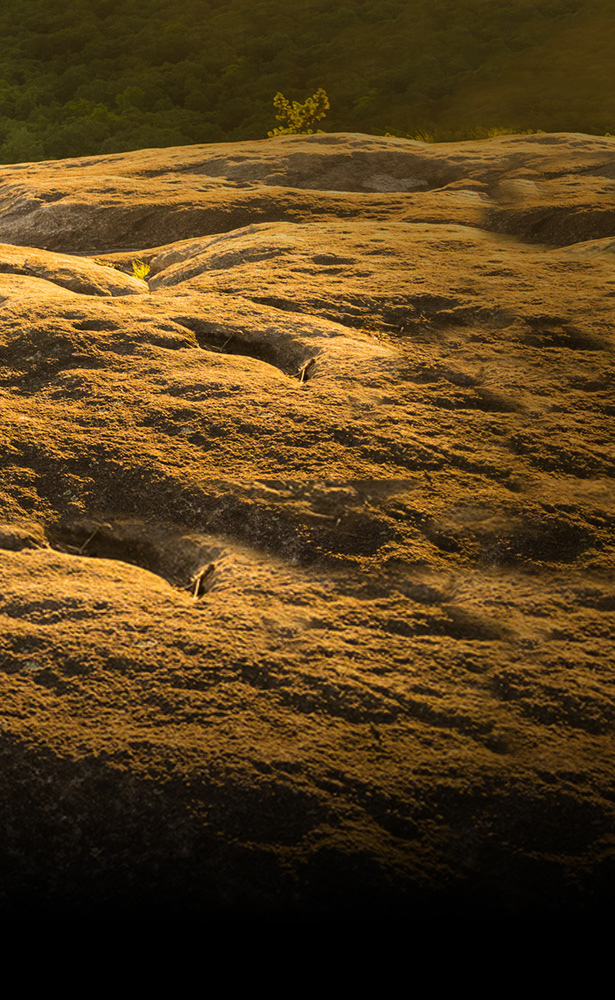
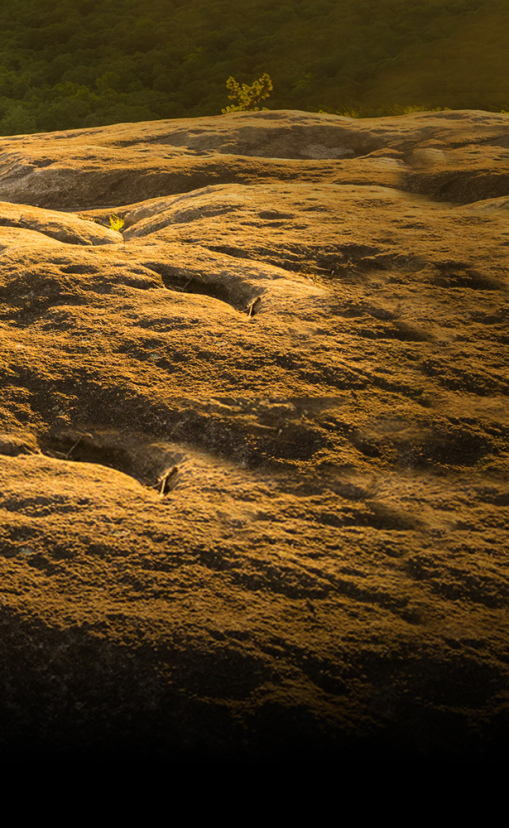
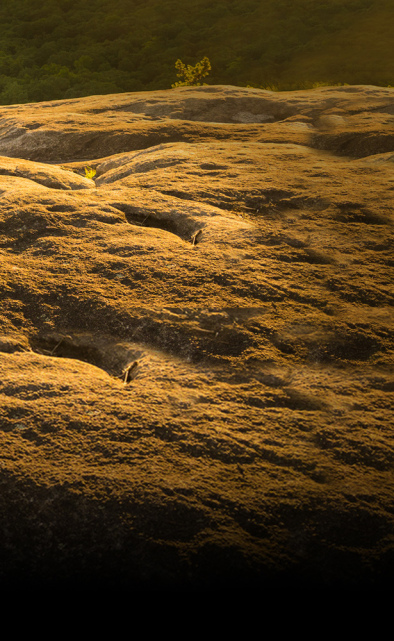

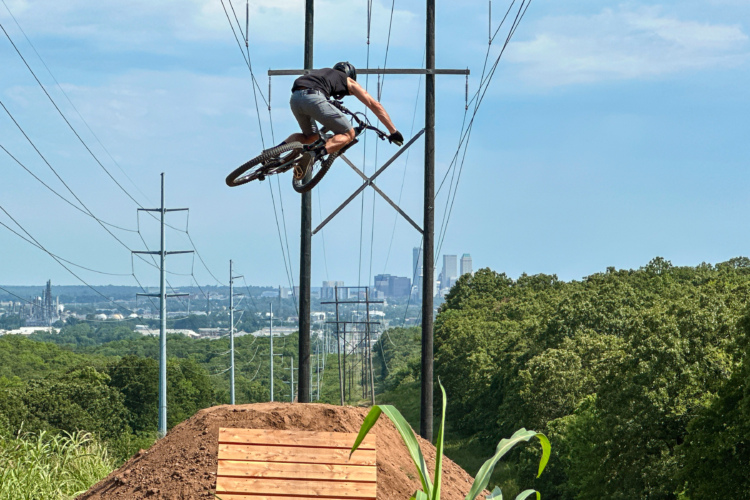

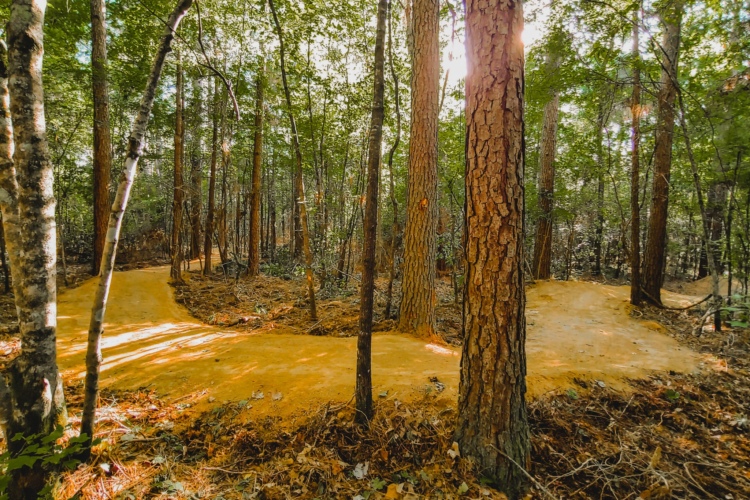
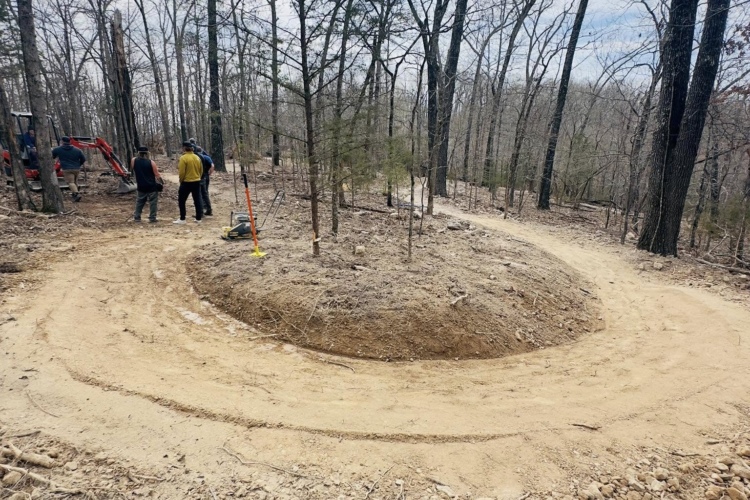

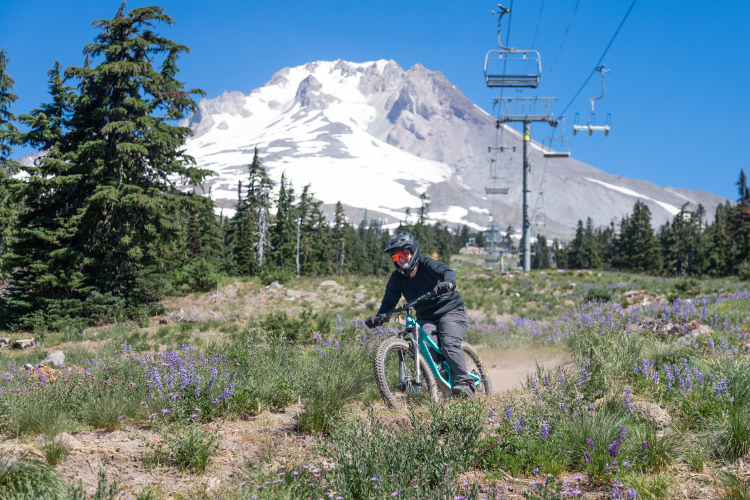

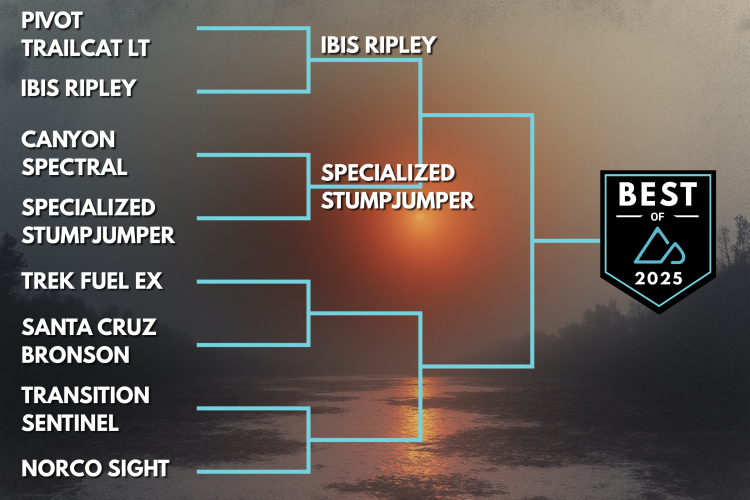

2 Comments
Oct 8, 2025
Oct 9, 2025